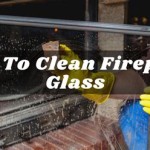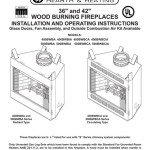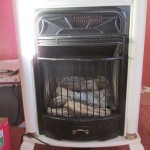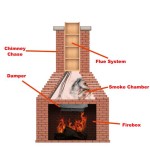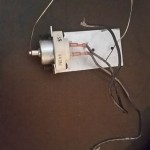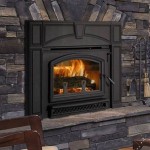Tile Fireplace Surround Decor Remodeling
The fireplace often serves as the focal point of a living room or family space. Remodeling the fireplace surround with tile offers a transformative opportunity to enhance the aesthetic appeal and overall value of a home. Tile provides a durable, versatile, and visually appealing material choice for updating a fireplace surround. The scope of a tile fireplace surround decor remodeling project can range from a simple cosmetic upgrade to a comprehensive structural modification, depending on the homeowner's design preferences and budget.
Considerations for this type of remodeling project include selecting the appropriate tile type, preparing the existing fireplace surround surface, and adhering to building codes and safety regulations. Proper planning and execution are crucial for achieving a successful and long-lasting result. The aesthetic outcome should complement the existing architectural style of the home and reflect the personal taste of the homeowner.
Selecting the Appropriate Tile Type
The selection of tile type is a paramount decision in a fireplace surround remodeling project. Several factors influence this decision, including the desired aesthetic, the budget, and the functional requirements of the fireplace. Common tile materials used for fireplace surrounds include ceramic, porcelain, natural stone (such as marble, granite, and slate), and glass. Each material possesses unique characteristics regarding durability, heat resistance, maintenance needs, and cost.
Ceramic tile is a popular and comparatively affordable option. It is available in a wide range of colors, patterns, and sizes, offering considerable design flexibility. However, ceramic tile is generally less durable and less heat resistant than other options like porcelain or natural stone. Porcelain tile is a denser and more durable alternative to ceramic. It exhibits superior resistance to heat, moisture, and wear, making it well-suited for fireplace surrounds that experience frequent use or direct exposure to heat. Porcelain tile also offers a diverse range of aesthetic possibilities, including options that mimic the appearance of natural stone.
Natural stone tiles, such as marble, granite, and slate, offer a luxurious and timeless aesthetic. These materials are known for their inherent beauty, durability, and heat resistance. However, natural stone tiles can be more expensive than ceramic or porcelain tiles, and they may require specialized installation and maintenance procedures. Glass tiles provide a modern and sophisticated look. They are available in various colors, shapes, and sizes, and they can add a unique visual element to a fireplace surround. Glass tiles are generally easy to clean, but they may be susceptible to scratching and damage.
When selecting a tile type, it is essential to consider the overall architectural style of the home. For example, a traditional home may benefit from the classic elegance of marble or granite, while a contemporary home may be better suited to the clean lines and modern aesthetic of glass or porcelain tile. Ultimately, the best tile type for a fireplace surround will depend on the individual needs and preferences of the homeowner.
Preparing the Existing Fireplace Surround Surface
Proper preparation of the existing fireplace surround surface is essential for ensuring the successful adhesion and longevity of the new tile. The specific preparation steps will depend on the condition and material of the existing surround. Common surface preparation tasks include cleaning, leveling, and applying a suitable bonding agent.
The first step is to thoroughly clean the existing surround surface to remove any dirt, dust, grease, or loose debris. This can be achieved using a mild detergent and water, followed by a thorough rinsing and drying. If the existing surround is painted or coated, it may be necessary to remove the paint or coating using a chemical stripper or mechanical abrasion. A clean and stable surface is crucial for proper tile adhesion.
Leveling the existing surround surface is important for preventing uneven tile placement and ensuring a professional-looking result. Any cracks, holes, or uneven areas should be repaired using a suitable patching compound. The patching compound should be allowed to dry completely before proceeding with the tile installation. In some cases, it may be necessary to apply a self-leveling compound to create a perfectly smooth and even surface.
Applying a bonding agent, such as a tile primer or thin-set mortar, is essential for promoting adhesion between the existing surround surface and the new tile. The bonding agent should be selected based on the specific tile type and the material of the existing surround. The bonding agent should be applied according to the manufacturer's instructions, ensuring a uniform and consistent coverage. Proper surface preparation significantly increases the likelihood of a successful and durable tile installation.
Adhering to Building Codes and Safety Regulations
Remodeling a fireplace surround requires adherence to local building codes and safety regulations. These regulations are designed to ensure the safe and proper installation of the fireplace surround and to prevent fire hazards. It is important to consult with local building officials or a qualified contractor to determine the specific requirements for a particular project.
One crucial aspect of code compliance is maintaining proper clearances between the fireplace opening and any combustible materials, such as wood framing or drywall. These clearances are specified in building codes and are intended to prevent the spread of fire. The clearances may vary depending on the type of fireplace, the fuel used (e.g., wood, gas), and the construction of the fireplace surround. Failure to maintain adequate clearances can result in a fire hazard and may violate building codes.
The selection of appropriate materials is also governed by building codes and safety regulations. Fire-resistant or non-combustible materials are typically required for fireplace surrounds, particularly in areas near the fireplace opening. Tile is generally considered a safe and acceptable material for fireplace surrounds, but it is important to ensure that the tile is installed correctly and that any underlying materials, such as mortar or backer board, are also fire-resistant.
In projects involving gas fireplaces, it is essential to ensure that all gas lines and connections are installed by a qualified and licensed professional. Improper installation of gas lines can result in gas leaks or explosions, posing a significant safety risk. Regular inspections of gas fireplaces and their associated components are recommended to ensure proper functioning and to detect any potential problems. Adhering to building codes and safety regulations is paramount for ensuring the safety and well-being of the occupants of the home.

Warm Up With Fireplace Tile Ideas Home Remodel Surround

53 Best Fireplace Tile Ideas And Designs With S For 2024 Mantel Decor Design

Fireplace Tile Ideas Designs To Inspire You

30 Most Beautiful Fireplace Tile Ideas For 2024 Decor Home Surround Surrounds
Trend Watch Tile Fireplace Surrounds

Breathing New Life Inspiring Fireplace Renovation Ideas And Designs Belk Tile

Marble Fireplace Makeover Centsational Style

Remodeling A Fireplace With Tile

Our Favorite Fireplaces From Fixer Upper Welcome Home With Chip And Joanna Gaines

5 Steps To A Beautiful Fireplace Remodel Simply Home Decorating
Related Posts

